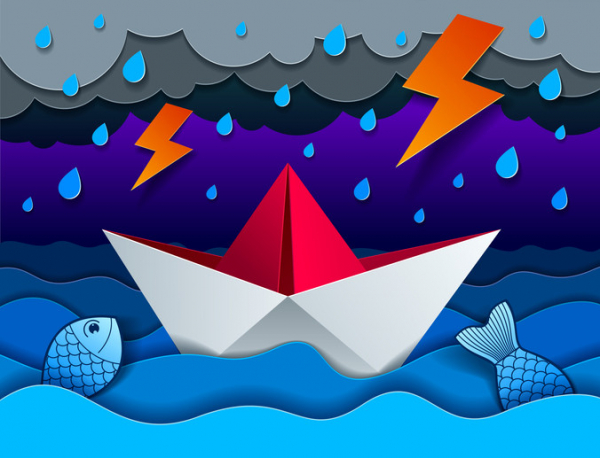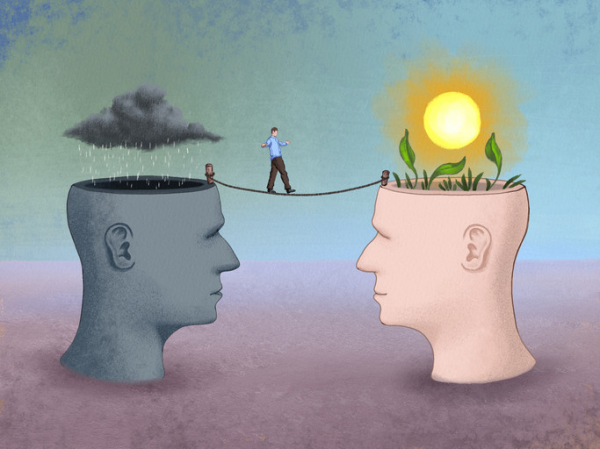
5 great tips for sustainable summer living

Sustainable living treads lightly on natural resources and follows a rethink, reuse, repurpose mantra to minimize waste.
Big and small wallet-friendly tips can help you save money and befriend our planet this summer, says Dr. Wynne Armand, a primary care physician at Harvard-affiliated Massachusetts General Hospital, and associate director of the Mass General Center for the Environment and Health. Here are five great tips to get you started.
1. Embrace the 5 Rs
Refuse, reduce, reuse, repurpose, and only then recycle is a well-laid out sustainability strategy promoted online by the Cincinnati Recycling and Reuse Hub. Do you really want or need a shiny new object? Where can you share tasks or tools? What could you swap, give away, or buy used? How could you slim down your recycling stream?
Give yourself permission to start here: Nobody is perfect. We all have preferences and sustainability blind spots, fumbles, and “sorry, just no” feelings. Start where you are and add on when you can.
2. Cut down on cooling energy
Summer heat can endanger your health, and paring back on energy use isn’t always possible or wise. Still, it may be possible to:
- Stay cooler naturally. Pull down shades during daytime hours to block out hot sun. Open windows at night if the temperature cools down, and to capture cross breezes if possible. Dress in loose cotton clothes and wear a shading hat when outdoors. Remember that sun bounces off lighter colors and is soaked up by black or darker colors. Make your own shade by carrying an umbrella on sunny — not just rainy — days. “Prepare meals that don’t require cooking or baking, since that saves resources and keeps your home cooler,” advises Dr. Armand.
- Seek shade and cool spots. If you don’t have air conditioning or you worry about the bills, green, leafy spaces like parks can help cool you down. Cities and towns often open cooling centers, splash pads, and public pools. Public buildings like libraries and malls are available during daytime hours for anyone trying to beat the heat.
- Turn up the temperature. On air conditioning, that is. If you’re fortunate enough to have air conditioning at home, follow natural cues. When you’re shivering, sweater-seeking, or tucked up under blankets, push the temperature up to save energy and money.
3. Save resources
A sharp eye for energy savings may help pare down bills, too.
- Electrify. Shrink your carbon footprint and help cut air pollution by using electric grills, mowers, and other landscaping tools. When tools or appliances need to be replaced, consider electric options.
- Conserve energy. Turn off electrical equipment that is not in use in the office and at home, such as lights, TVs, computers, copiers, and printers.
- Go low when demand is high. “During peak electricity demand, ensuring stability of the grid is essential to public health,” says Dr. Armand. “Avoid using appliances like dishwashers, washers, or dryers during periods of high demand. Instead, do these chores — and charge your electric car, if you have one — late at night.” Some energy-hogging appliances have timers to help with this.
- Sign up for Shave the Peak alerts. Know when to curb your electricity use to avoid times when your local electric grid is relying on nonrenewable, expensive, polluting fossil fuels.
4. Stay heat-aware and hydrated
Saving resources is a worthy goal, but not at the expense of staying safe and healthy when summer temperatures spike.
- Make plans to stay cool. When summer swelters, having an affordable, personal plan to cool down — especially during heat waves — can be lifesaving.
- Watch out for signs of dehydration. Drinking plenty of water and eating water-rich foods like lettuce, cucumbers, melon, and citrus fruits can help you stay well hydrated. Water-filling stations for reusable bottles cut down on single-use plastic bottles and help save money at the grocery store.
- Know how to treat heat rash and more serious heat-related illnesses. The small, itchy red or darkened bumps of heat rash (prickly heat) occur when sweat ducts become blocked or inflamed. This makes it harder for children and adults to cool their bodies down. Generally, too much heat can harm our bodies, particularly if we work outdoors, take certain medicines, or have certain illnesses.
5. Kickstart sharing circles
Sharing circles can help you expand a wardrobe, tool shed, or taste in foods — all while building community.
- Start local, then consider expanding. Brainstorm with a few friends on what you all might like to share or swap. Think seasonal: gardening tools, outside décor, summer sports (because not everyone needs to own a paddleboard). Local clubs, block associations, or public spaces like libraries and schools may be willing to host community swaps and shares. Some communities have swap sheds and some libraries loan gadgets and even appliances like a portable induction cooktop burner, tech and home-improvement tools, games, and much more.
- Summer supper club. Perfect for those overloaded with summer harvests from window boxes, community gardens, or a CSA share. Build a theme around what’s fresh, local, and low-cost. Plant-forward menus are good for health and for the planet. Cultural inspiration always helps. And having one person cook — or stressing no-cook recipes — saves resources.
- Cut your clothing allowance. Tired of your wardrobe? Gather friends for a summer clothes and accessories swap. Be sure to agree on rules: gently-used, carefully washed, no stains, and so on.
- Hot spots. “Gathering at a friend’s or neighbor’s home for fun games and festivities on hot days is a great way to build community while saving on energy costs for cooling. And rotate for that next hot day!” says Dr. Armand.
About the Author

Francesca Coltrera, Editor, Harvard Health Blog
Francesca Coltrera is editor of the Harvard Health Blog, and associate editor of multimedia content for Harvard Health Publishing. She is an award-winning medical writer and co-author of Living Through Breast Cancer and The Breast Cancer … See Full Bio View all posts by Francesca Coltrera
About the Reviewer

Howard E. LeWine, MD, Chief Medical Editor, Harvard Health Publishing
Dr. Howard LeWine is a practicing internist at Brigham and Women’s Hospital in Boston, Chief Medical Editor at Harvard Health Publishing, and editor in chief of Harvard Men’s Health Watch. See Full Bio View all posts by Howard E. LeWine, MD

Life can be challenging: Build your own resilience plan

Nantucket, a beautiful, 14-mile-long island off the coast of Massachusetts, has a 40-point resiliency plan to help withstand the buffeting seas surrounding it as climate change takes a toll. Perhaps we can all benefit from creating individual resilience plans to help handle the big and small issues that erode our sense of well-being. But what is resilience and how do you cultivate it?
What is resilience?
Resilience is a psychological response that helps you adapt to life’s difficulties and seek a path forward through challenges.
“It’s a flexible mindset that helps you adapt, think critically, and stay focused on your values and what matters most,” says Luana Marques, an associate professor of psychiatry at Harvard Medical School.
While everyone has the ability to be resilient, your capacity for resilience can take a beating over time from chronic stress, perhaps from financial instability or staying in a job you dislike. The longer you’re in that situation, the harder it becomes to cope with it.
Fortunately, it’s possible to cultivate resilience. To do so, it helps to exercise resiliency skills as often as possible, even for minor stressors. Marques recommends the following strategies.
Shift your thoughts
In stressful situations, try to balance out your thoughts by adopting a broader perspective. “This will help you stop using the emotional part of your brain and start using the thinking part of your brain. For example, if you’re asking for a raise and your brain says you won’t get it, think about the things you’ve done in your job that are worthy of a raise. You’ll slow down the emotional response and shift your mindset from anxious to action,” Marques says.
Approach what you want
“When you’re anxious, stressed, or burned out, you tend to avoid things that make you uncomfortable. That can make you feel stuck,” Marques says. “What you need to do is get out of your comfort zone and take a step toward the thing you want, in spite of fear.”
For example: If you’re afraid of giving a presentation, create a PowerPoint and practice it with colleagues. If you’re having conflict at home, don’t walk away from your partner — schedule time to talk about what’s making you upset.
Align actions with your values
“Stress happens when your actions are not aligned with your values — the things that matter most to you or bring you joy. For example, you might feel stressed if you care most about your family but can’t be there for dinner, or care most about your health but drink a lot,” Marques says.
She suggests that you identify your top three values and make sure your daily actions align with them. If being with family is one of the three, make your time with them a priority — perhaps find a way to join them for a daily meal. If you get joy from a clean house, make daily tidying a priority.
Tips for success
Practice the shift, approach, and align strategies throughout the week. “One trick I use is looking at my calendar on Sunday and checking if my actions for the week are aligned with my values. If they aren’t, I try to change things around,” Marques says.
It’s also important to live as healthy a lifestyle as possible, which will help keep your brain functioning at its best.
Healthy lifestyle habits include:
- getting seven to nine hours of sleep per night
- following a healthy diet, such as a Mediterranean-style diet
- aiming for at least 150 minutes of moderate-intensity activities (such as brisk walking) each week — and adding on strength training at least twice a week
- if you drink alcohol, limiting yourself to no more than one drink per day for women and two drinks per day for men
- not smoking
- staying socially connected, whether in person, by phone or video calls, social media, or even text messages.
Need resilience training?
Even the best athletes have coaches, and you might benefit from resilience training.
Consider taking an online course, such as this one developed by Luana Marques. Or maybe turn to a therapist online or in person for help. Look for someone who specializes in cognitive behavioral therapy, which guides you to redirect negative thoughts to positive or productive ones.
Just don’t put off building resilience. Practicing as you face day-to-day stresses will help you learn skills to help navigate when dark clouds roll in and seas get rough.
About the Author

Heidi Godman, Executive Editor, Harvard Health Letter
Heidi Godman is the executive editor of the Harvard Health Letter. Before coming to the Health Letter, she was an award-winning television news anchor and medical reporter for 25 years. Heidi was named a journalism fellow … See Full Bio View all posts by Heidi Godman
About the Reviewer

Howard E. LeWine, MD, Chief Medical Editor, Harvard Health Publishing
Dr. Howard LeWine is a practicing internist at Brigham and Women’s Hospital in Boston, Chief Medical Editor at Harvard Health Publishing, and editor in chief of Harvard Men’s Health Watch. See Full Bio View all posts by Howard E. LeWine, MD

What is cognitive behavioral therapy?

Cognitive behavioral therapy (CBT) teaches people to challenge negative thought patterns and turn less often to unhelpful behaviors. These strategies can improve your mood and the way you respond to challenging situations: a flat tire, looming deadlines, family life ups and downs.
Yet there’s much more depth and nuance to this well-researched form of psychotherapy. It has proven effective for treating anxiety, depression, and other mental health conditions. Tailored versions of CBT can also help people cope with insomnia, chronic pain, and other nonpsychiatric conditions. And it can help in managing difficult life experiences, such as divorce or relationship problems.
What are the key components of CBT?
One important aspect of CBT relates to perspective, says psychologist Jennifer Burbridge, assistant director of the Cognitive Behavioral Therapy Program at Harvard-affiliated Massachusetts General Hospital.
“Therapists who practice CBT don’t see the problems or symptoms people describe as having one single cause, but rather as a combination of underlying causes,” she says. These include
- biological or genetic factors
- psychological issues (your thoughts, physical sensations, and behaviors)
- social factors (your environment and relationships).
Each of these factors contributes to — and helps maintain — the troublesome issues that might prompt you to seek therapy, she explains.
How does CBT describe our emotions?
Our emotions have three components: thoughts, physical sensations, and behaviors.
“Thoughts are what we say to ourselves, or 'self-talk,'” says Burbridge. Physical sensations are what we observe in our bodies when we experience an emotional situation: for example, when your heart rate rises in stressful circumstances. Behaviors are simply the things you do — or do not do. For instance, anxiety might prevent you from attending a social event.
All three components are interrelated and influence one another. That’s why CBT helps people to develop skills in each of them. “Think of it as a wellness class for your emotional health,” says Burbridge.
How long does CBT last?
CBT is a goal-oriented, short-term therapy. Typically it involves weekly, 50-minute sessions over 12 to 16 weeks. Intensive CBT may condense this schedule into sessions every weekday over one to three weeks.
Is CBT collaborative?
“When I first meet with someone, I’ll listen to what’s going on with them and start thinking about different strategies they might try,” Burbridge says. But CBT is a collaborative process that involves homework on the patient’s part.
What might that mean for you? Often, a first assignment involves self-monitoring, noting whether there are certain things, events, or times of day that trigger your symptoms. Future sessions focus on fine-tuning approaches to elicit helpful, adaptive self-talk, and problem-solving any obstacles that might prevent progress.
Certain thinking patterns are often associated with anxiety or depression, says Burbridge. Therapists help people recognize these patterns and then work with patients to find broader, more flexible ways to cope with difficult situations.
“We’re cognitive creatures with big frontal lobes that help us analyze situations and solve problems. That’s useful in some situations. But at other times, when you’re trying to manage your emotions, it may be better to pause and acknowledge and accept your discomfort,” says Burbridge.
Which CBT tools and strategies can help?
That particular skill — paying attention in the present moment without judgement, or mindfulness — is a common CBT tool. Another strategy that’s helpful for anxiety, known as exposure or desensitization, involves facing your fears directly.
“People avoid things that make them nervous or scared, which reinforces the fear,” says Burbridge. With small steps, you gradually expose yourself to the scary situation. Each step provides learning opportunities — for example, maybe you realize that the situation wasn’t as scary as you though it would be.
By trying new things instead of avoiding them, you begin to change your thought patterns. These more adaptive thinking patterns then make it more likely you will try new or challenging experiences in the future, thereby increasing your self-confidence.
How does CBT work?
Brain imaging research suggests conditions like depression or anxiety change patterns of activity in certain parts of the brain. One way CBT may help address this is by modifying nerve pathways involved in fear responses, or by establishing new connections between key parts of the brain.
A 2022 review focused on 13 brain imaging studies of people treated with CBT. The analysis suggested CBT may alter activity in the prefrontal cortex (often called the “personality center”) and the precuneus (which is involved in memory, integrating perceptions of the environment, mental imagery, and pain response).
Who might benefit from CBT?
CBT is appropriate for people of all different ages. This can range from children as young as 3 years — in tandem with parents or caregivers — to octogenarians. In addition to treating anxiety and depression, CBT is also effective for
- eating disorders
- substance abuse
- personality disorders
- attention deficit hyperactivity disorder (ADHD)
- obsessive compulsive disorder (OCD).
Additional evidence shows CBT may help people with different health issues, including irritable bowel syndrome, chronic fatigue syndrome, fibromyalgia, insomnia, migraines, and other chronic pain conditions. The therapy may also benefit people with cancer, epilepsy, HIV, diabetes, and heart disease.
“Many medical conditions can limit your activities. CBT can help you adjust to your diagnosis, cope with the new challenges, and still live a meaningful life, despite the limitations,” says Burbridge.
About the Author

Julie Corliss, Executive Editor, Harvard Heart Letter
Julie Corliss is the executive editor of the Harvard Heart Letter. Before working at Harvard, she was a medical writer and editor at HealthNews, a consumer newsletter affiliated with The New England Journal of Medicine. She … See Full Bio View all posts by Julie Corliss
About the Reviewer

Howard E. LeWine, MD, Chief Medical Editor, Harvard Health Publishing
Dr. Howard LeWine is a practicing internist at Brigham and Women’s Hospital in Boston, Chief Medical Editor at Harvard Health Publishing, and editor in chief of Harvard Men’s Health Watch. See Full Bio View all posts by Howard E. LeWine, MD